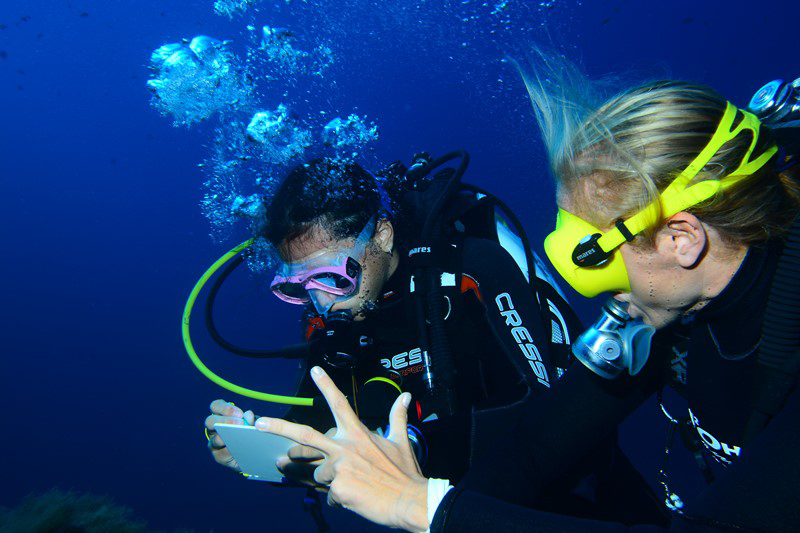
A Lively Year for a Living Sea
As divers we have access to a world that some people will never be able to see or even appreciate. When conversing with the locals or with people frequently visiting the island who never went scuba diving, I realise they know very little of Ustica and that they’re missing the best part of it. I always say that there’s a Second Island underwater! That’s why I feel the responsibility to showcase the beauty of the sea and educate those who can’t see it for themselves.
Children are the best ones to start with, as they are the future protectors of our planet. By educating and showing children the ocean through a conservationist’s eyes, we can hopefully help them develop their own love for the underwater world and for the marine environment as a whole.
Having this principle as the starting point, in the past few years, I’ve been trying to figure out a way to reach the little ones, especially those whose parents wouldn’t ever encourage going scuba diving, or even snorkelling. In my career I have had the privilege to teach numerous kids to scuba dive and to admire their natural ability in staying underwater. But those were a kind of “pre-selected” children, mostly initiated by the family or have already developed a special passion for the sea. Since living on the island all year, my thoughts have been drawn to the local children, but at the same time, to be known mainly as a dive operator working for tourists made it arduous for me to reach out to them, as I was thought to be an alien living in the underwater world and would have nothing to share with kids because of the hazardous activities I perform.
From Aquawoman to Advocate
The opportunity arose at the beginning of 2023, with the Environmental Foundation Marevivo and the Guardian Dolphins educational program. I was already assigned the responsibility of leading the operational team of Ustica Island for Marevivo Sicilia, but it was only with the approval by the national headquarters of the association and acceptance by the local school to carry out this environmental education program, that allowed me to connect with children in a proper way.
Guardian Dolphins
Delfini Guardiani dell'Isola is a project with the aim of setting up educational courses about environment and sustainability for the primary and secondary school classes of the Italian small islands. During the academic year the students are guided by the operators of Marevivo and the teachers to leave their classes and plunge into the surrounding nature discovering its naturalistic, historical and cultural aspects, as well as facing the threats that weigh on the marine ecosystem. We were three operators (me and other two locals, Tony and Valentina) in charge of the 3rd, 4th and 5th class of primary school (well, actually they figured as two classes because there were only two students of the 4th cl. who were merged to the 3rd cl.). The program, apart from its standard topics, was focused on awareness of the marine protected area of Ustica Island. The four sessions for each class or group of students included a couple of indoor activities for drawing, playing, creating artworks and knowledge, while most of the time was dedicated to outdoor activities and excursions. They had an inland walk (well, never far enough from the seaside!) along the footpaths of the natural reserve, a beach clean-up and an educational meeting with the local fishermen at work. During the project they had to create their own The Book Of My Sea (Il Libro del Mio Mare) and record their experiences as evidence of their progress.
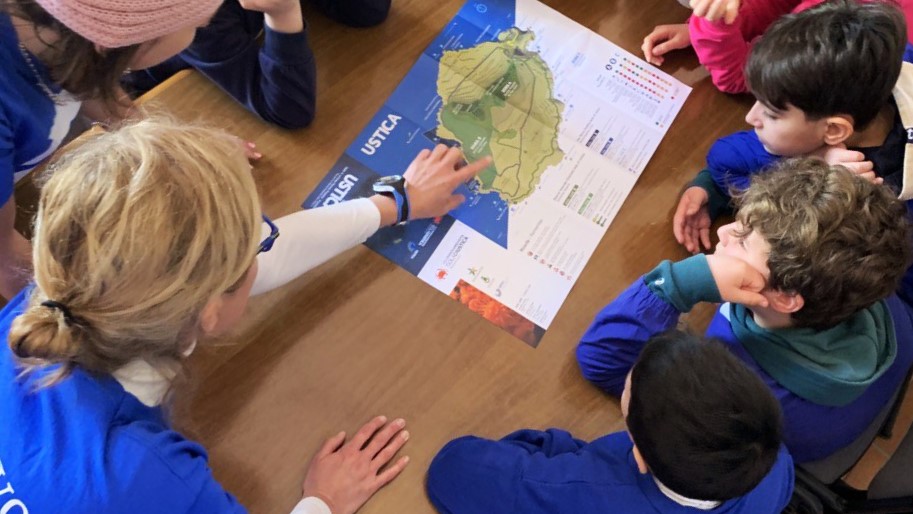
The first day was dedicated to starting the book by drawings, each one giving oneself a nickname, setting the rules of behaviour and best practices as naturalists and to knowledge assessment of the MPA. It striked us how interested the younger ones were compared to the older children, contrary to what we expected. We thought we would have had difficulties talking about environmental issues with the little ones, while they engaged more enthusiastically , acquired the concepts and made them their own. Instead, the 5th class (10 and 11 year-old kids) was hard to get deeply involved in the activities - we struggled to hold their attention and they often had a bit to say when giving instructions or listing to-dos and not-to-dos about environmentally friendly behaviour. Even if it was an indoor session, we decided not to take it at school: thanks to the MPA we carried out the full program having the Welcome Centre as a base, making them feel comfortable and see it as their House of The Sea. By the way, a Blue Corner is installed here by Marevivo containing equipment and teaching materials related to the program, available for anyone, at any time.
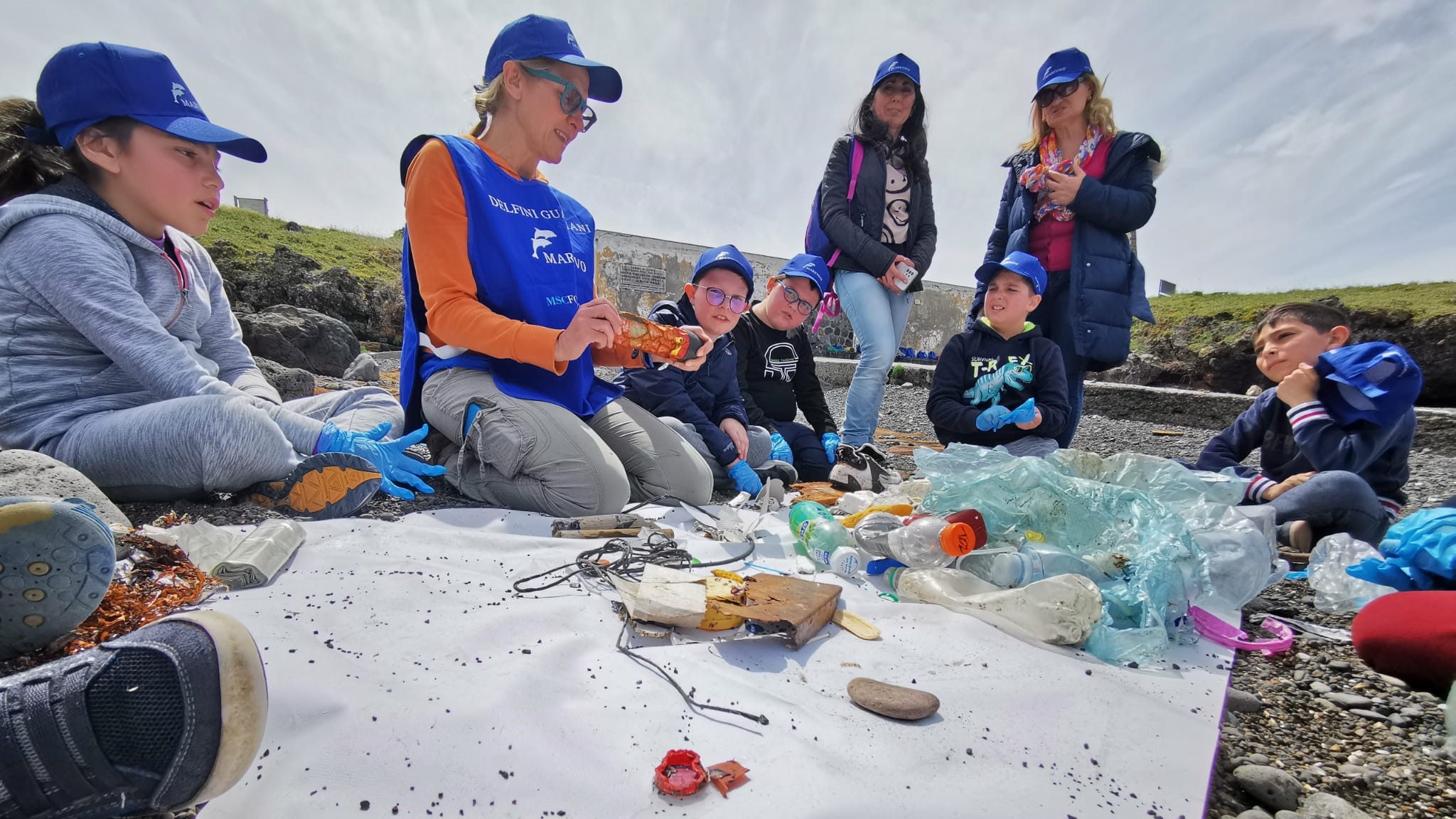
The second appointment was the Beach Clean-Up Day. Finally going outdoors! The local bus brought them to one of the little bays of the island, in the A Zone of the MPA, where we spent a couple of hours collecting debris among the rocks (yes, a rocky beach, no sandy beaches on Ustica Island!) and sorting the items by type of material while providing important information about separate waste collection and single-use plastics. We also found strange items from distant seas, such as the Indian Ocean or the Atlantic, which gave us the chance to introduce the idea of an ocean planet instead of separated seas.
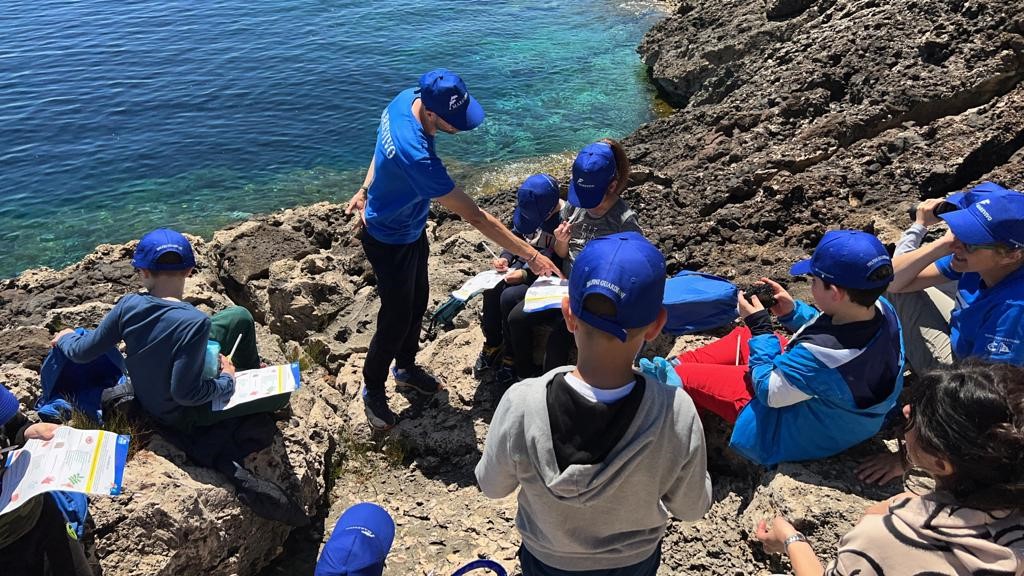
The following outdoor session was focussed on identifying plants and animals of the island during a hike along one of the traced paths of the terrestrial nature reserve. Some of them taking pictures with a traditional photocamera, others filling out an identification chart for sounds, smells, colours and textures of the elements in nature. Everything was closely related to the sea, especially when we stopped over a “marine terrace” containing fossil shells, letting them know that the island has not always been on the same level and that in some way it has had its geological ups and downs.
The last educational session was about an interview with local fishermen (who happened to be relatives to most of them!). It’s a challenge to talk about conservation and preservation of marine species when living in a community partially based on fishing activities, where fishermen are part of their families, if not their parents themselves. Capture and protection are a bit difficult to go along together; that’s why the MPA of Ustica has set several projects to improve sustainability in small fisheries while involving local fishermen in species monitoring. Probably if we imagine the few fishermen left on the island as an endangered species to preserve, we might find a balance between conservation and production. However, our aim is to implant in children respect for marine life and working people at the same time, so we let them prepare a list of questions they would have had in mind. Based on children’s questions and fishermen’s heartfelt answers we could investigate their knowledge and points of view in order to adapt the lesson.
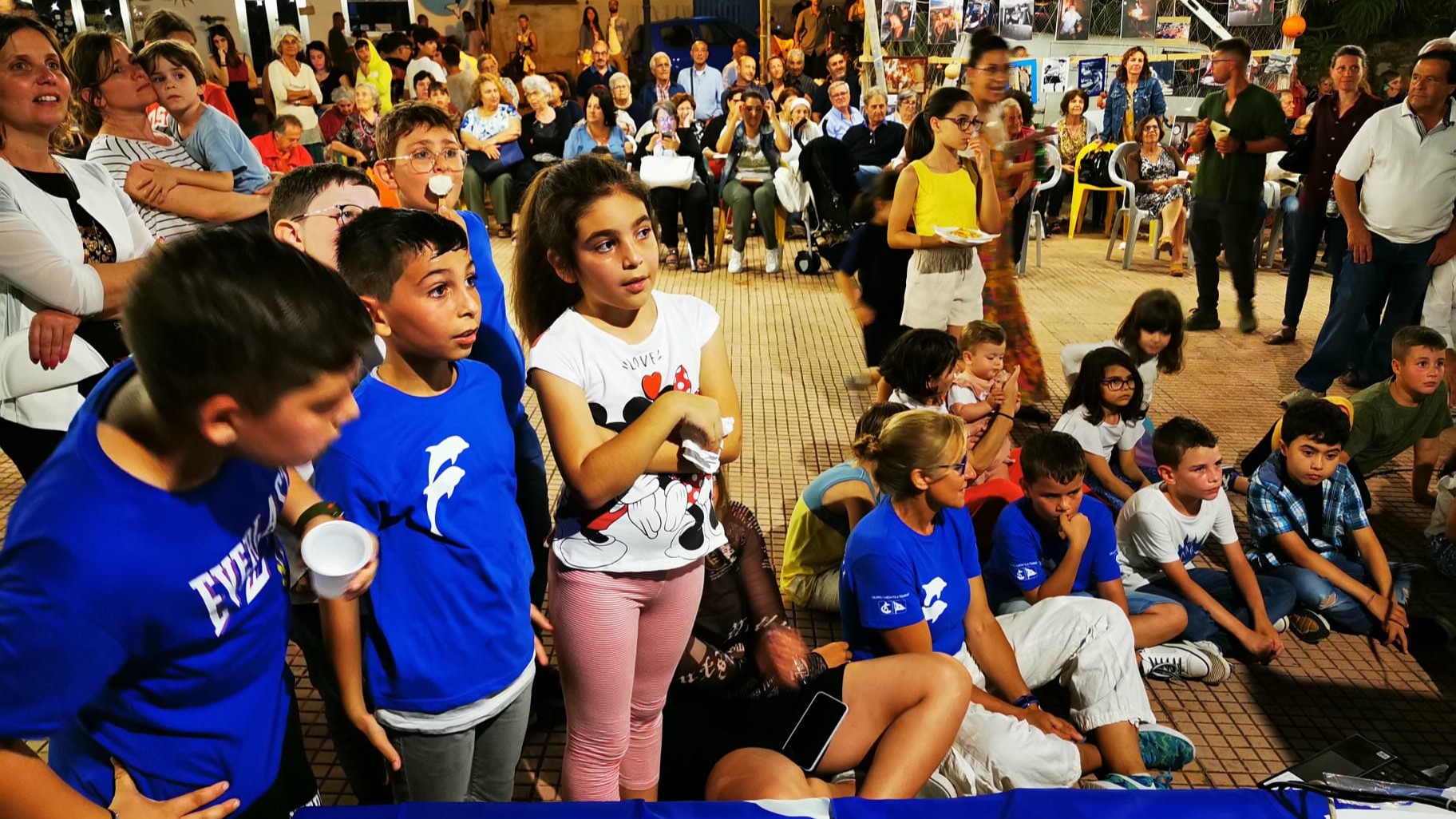
Four intensive sessions are still too little for a conservationist development, but earning the certificate of “Guardian Dolphin of the Island” given by the Commandant of the Coast Guard and announcing their promise to take care of their island in front of dozens of people is something that gives them the idea of a kind of responsibility that they will have to take part in.
The Stepping Stone To the “Blue Education”
Delfini Guardiani allowed me to kick off further cooperation in educational projects and awareness programs with several institutions which took place in the following months.
As part of the Board of Nature & Environment of the Research and Documentation Centre of Ustica Island (Centro Studi e Documentazione dell’Isola di Ustica) , I got involved in a couple of school projects of cross-cultural ways to acquire skills and guidance (called PTCO programs in Italy). One of them was extremely challenging as I wasn’t expecting to be in charge of the whole program, and I almost felt overwhelmed by such an amount of responsibility. The good outcome of an educational program for 39 students of a secondary school of central Italy, was for me much more demanding than organising the ultimate diving vacation of the year for hundreds of scuba divers. The students arrived quite prepared on the goal of their “mission”: going through four main topics - water, land, fire and air - they had to create a proposal of a plan for a sustainable living on the island. My role, in the guise of Marevivo operator, member of Centro Studi and accredited Dive Operator of the MPA, was to create and coordinate the activities for 3 full days that would cross these topics. The results exceeded my expectations: students and teachers fell in love with the island and gave us new hints on how the island shows itself to peering visitors; wide availability and spontaneous collaboration of other members, professors, operators and volunteers who have done their part to achieve the same goal and without whom I could have accomplished nothing. (Photo Album & Description at this link )
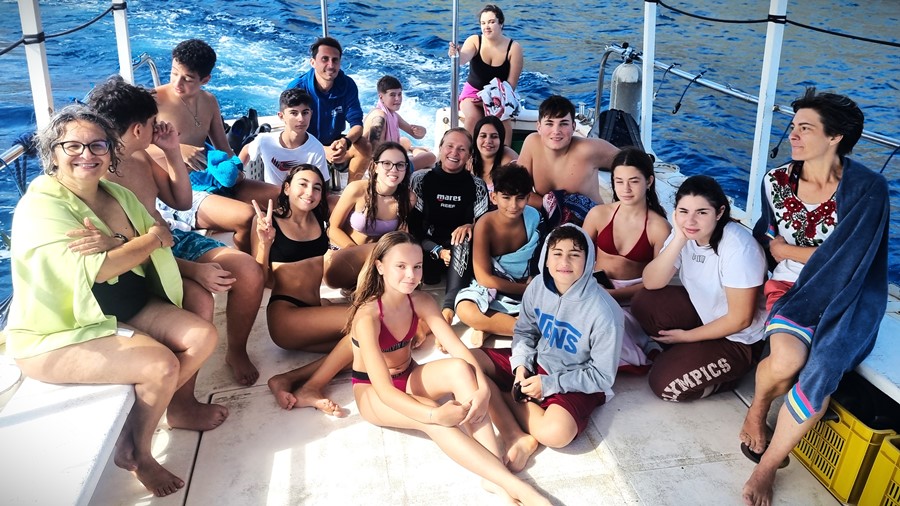
Volunteering for Raising Awareness among Holiday-goers and Movida
Summer is probably the most fruitful period if you want to reach out to the greatest number of people visiting the island, but probably the worst one when it’s about serious issues. Unluckily, as a seasonal operator myself, it’s also the most intense period of work, allowing me no extra time for any other activity outside of managing and running the operations at our dive centre. Nevertheless, as for any other program of Marevivo on Ustica Island, I was never alone: Tony, my wingman, did an outstanding job in our volunteering summer program.
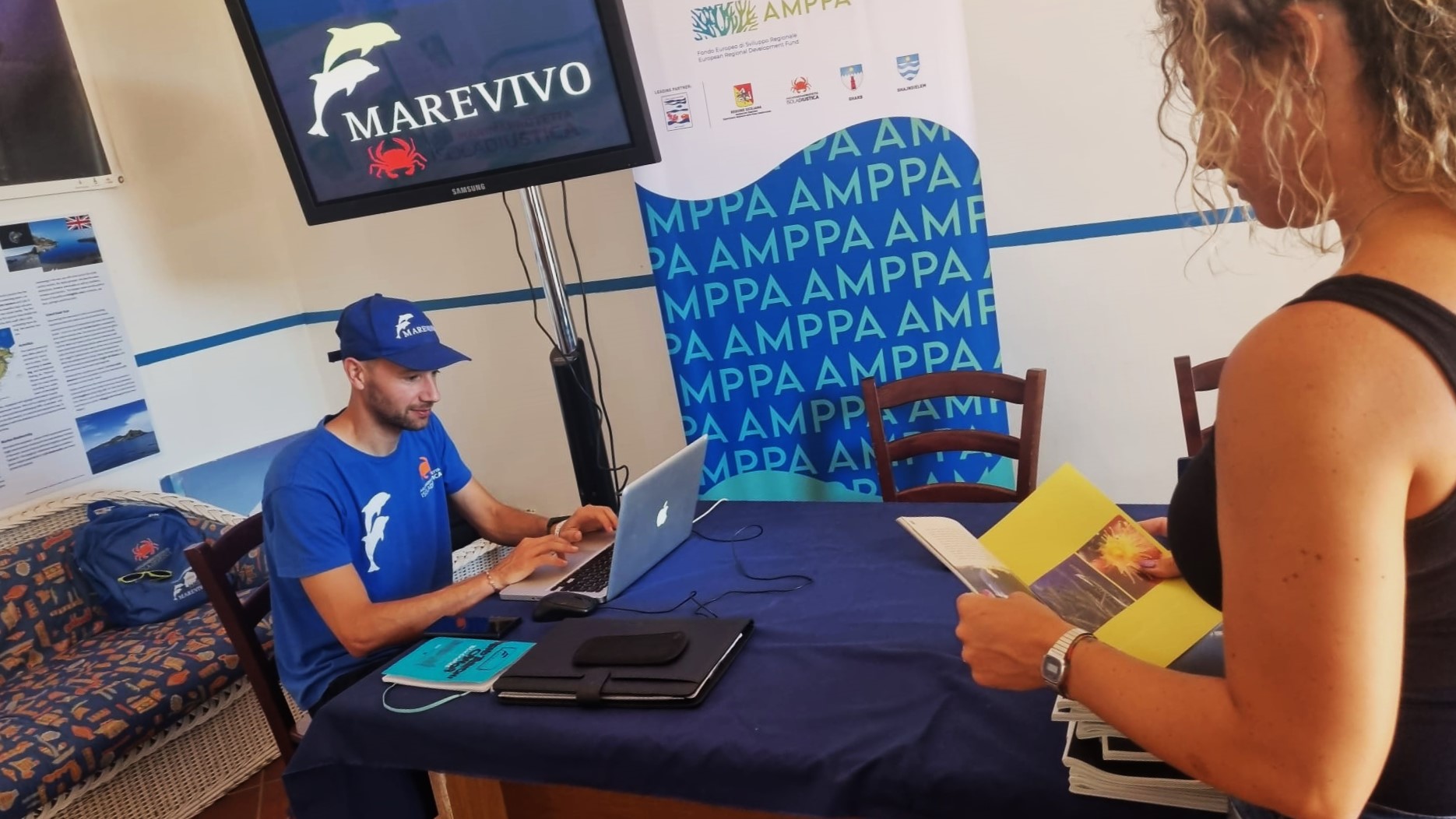
In accordance with an established protocol between Marevivo Sicilia and the Marine Protected Area Ustica Island we provided information on the naturalistic highlights of the island, as well as sharing the best practices to enjoy the features in an environment-friendly way. More than that, Tony and other volunteers were on the front line leading thematic excursions to enhance some natural attractions in order to enjoy them in a responsible way.
The week program we created was offered for free to all visitors and included:
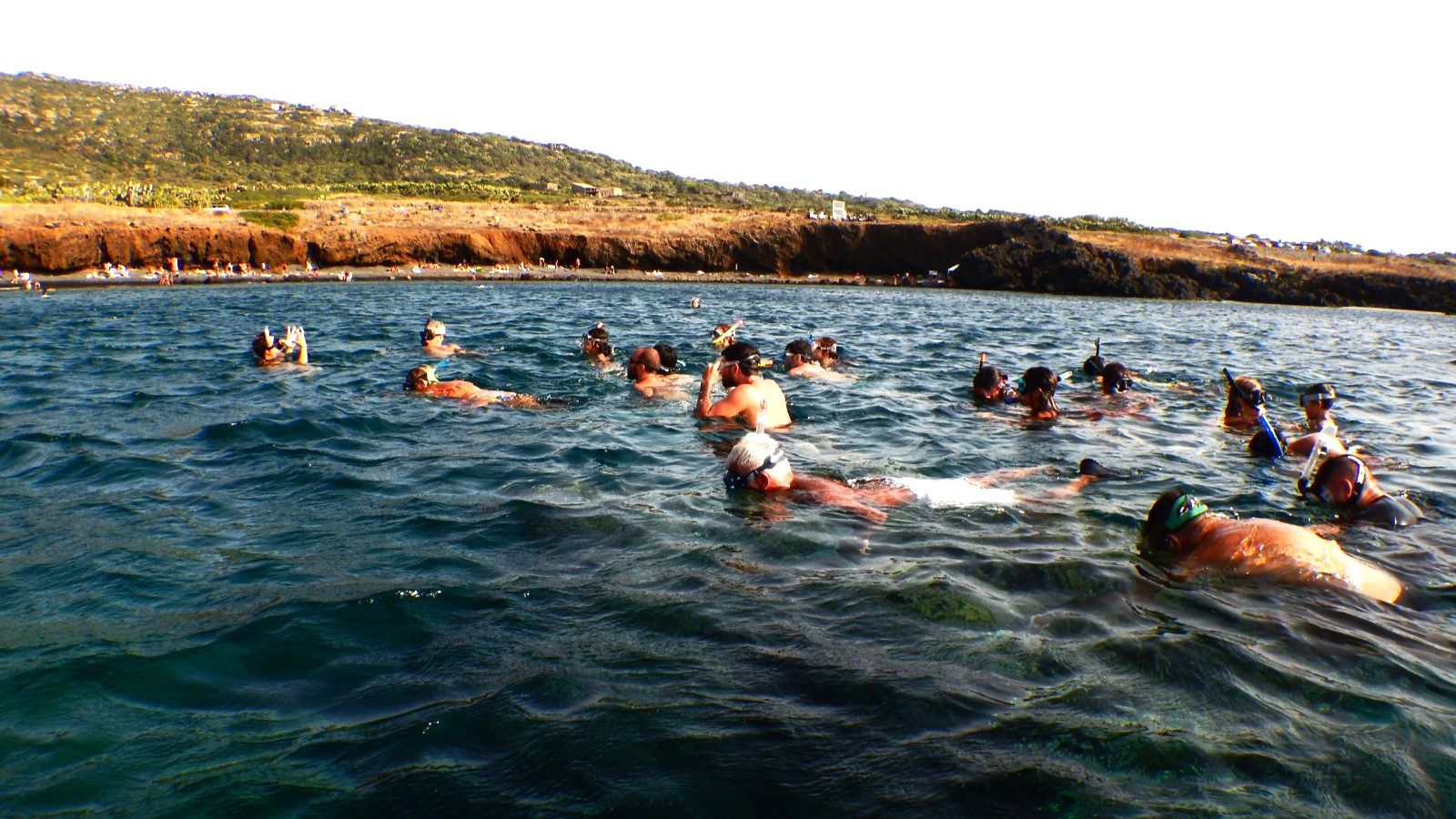 a Snorkeling Tour guided by the marine biologist Giulia of the MPA;
a Snorkeling Tour guided by the marine biologist Giulia of the MPA;
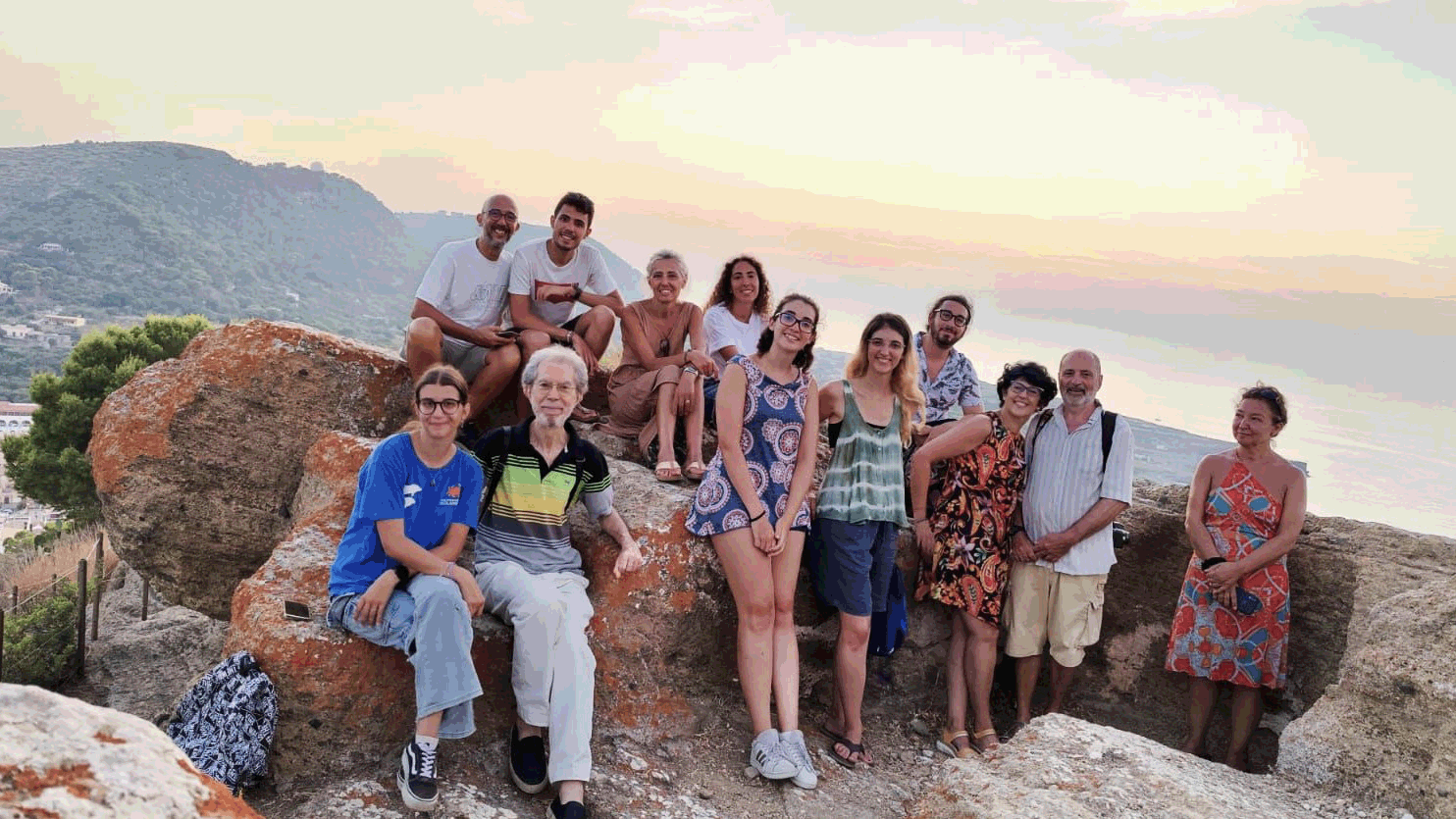 a visit to the Museum of Earth Science on the Falconiera peak guided by Zaira, a Geology student, with the amazing explanations given by the expert professor and president of the LABMUST, Laboratory-Museum of Earth Sciences Island of Ustica (Franco Foresta Martin, who offers these visits for free by his institution);
a visit to the Museum of Earth Science on the Falconiera peak guided by Zaira, a Geology student, with the amazing explanations given by the expert professor and president of the LABMUST, Laboratory-Museum of Earth Sciences Island of Ustica (Franco Foresta Martin, who offers these visits for free by his institution);
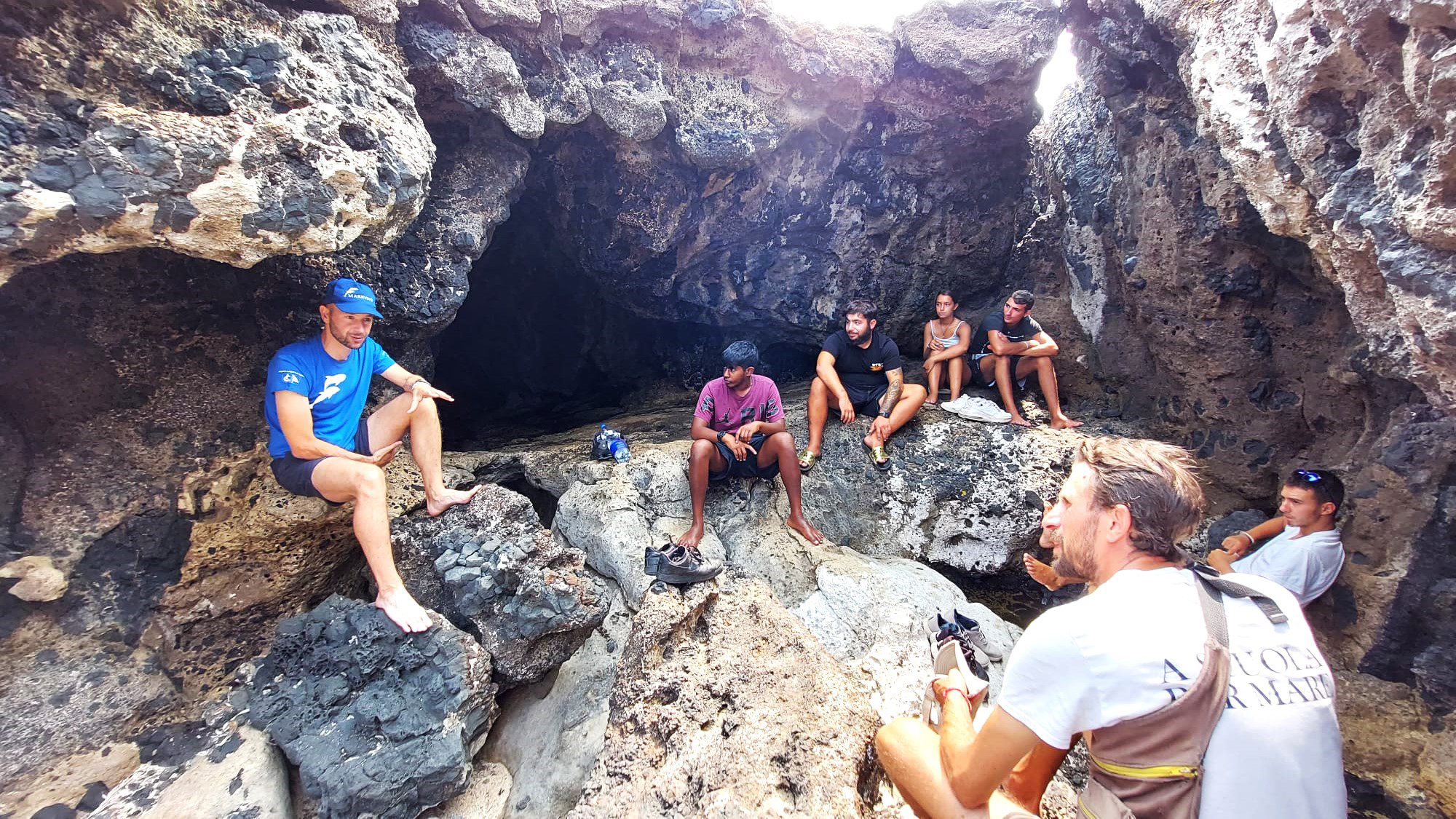 and an excursion to the Grotta Segreta (the Secret Grotto, the most known of the island!) where Tony would give instructions on what to be cautious of and explain why it has such a fragile environment.
and an excursion to the Grotta Segreta (the Secret Grotto, the most known of the island!) where Tony would give instructions on what to be cautious of and explain why it has such a fragile environment.
Also many of our clients enjoyed taking part in these programs after the diving day and had the chance to discover other interesting facts and natural attractions of the island that are not underwater!
Every night, in the after-dinner hours, the MPA centre was open for promotional events, documentary screening, educational entertainment for children or simply as a meeting point for information and reservations. After a long and exhausting day at sea and then at the office I hardly managed to spend another couple of hours of the night talking, planning and organising the activities but once I got together with my team, it was even harder not to take action!
The Year-end Challenge
While the summer season approaches the end and we’re longing for relaxation and for what we call our “ chilling-dives”, for the kids it’s the start of a new academic year and new projects are ready on the desk! It’s the turn of Plastic Free Schools Small Islands (Sicily Environment Fund) , a project that aims to involve all the schools of the small islands of Sicily, supporting them in implementing practices aimed at reducing single-use plastic in schools. The students of at least three classes are asked to produce or perform an artistic creation, material or digital, and participate in a contest where a final prize will award the school with a water filtration machine and the three classes awarded will also be given reusable water bottles. They had 2 months time (15th Oct. - 15th Dec) to start the project but it wasn’t until the last two weeks we managed to put them to work with the teacher at school and with extra afternoon sessions, kindly prepared by the MPA centre. We worked on a model of the island, where children would first place little objects depicting natural elements after the declaration that “This is the island I want!” and then creating ugly objects made by plastic debris, representing massive constructions and buildings, to endorse the statement “This is the island I DON’T want!” . The elder students created a poster with drawings and texts, displaying the Goal no.14 of UN Agenda 2030 while with a few of the middle school class we set up a funny short-movie of a Plastic-Free hero who moves into some moments of the kids’ lives warning them on the overuse of plastic and giving alternatives.
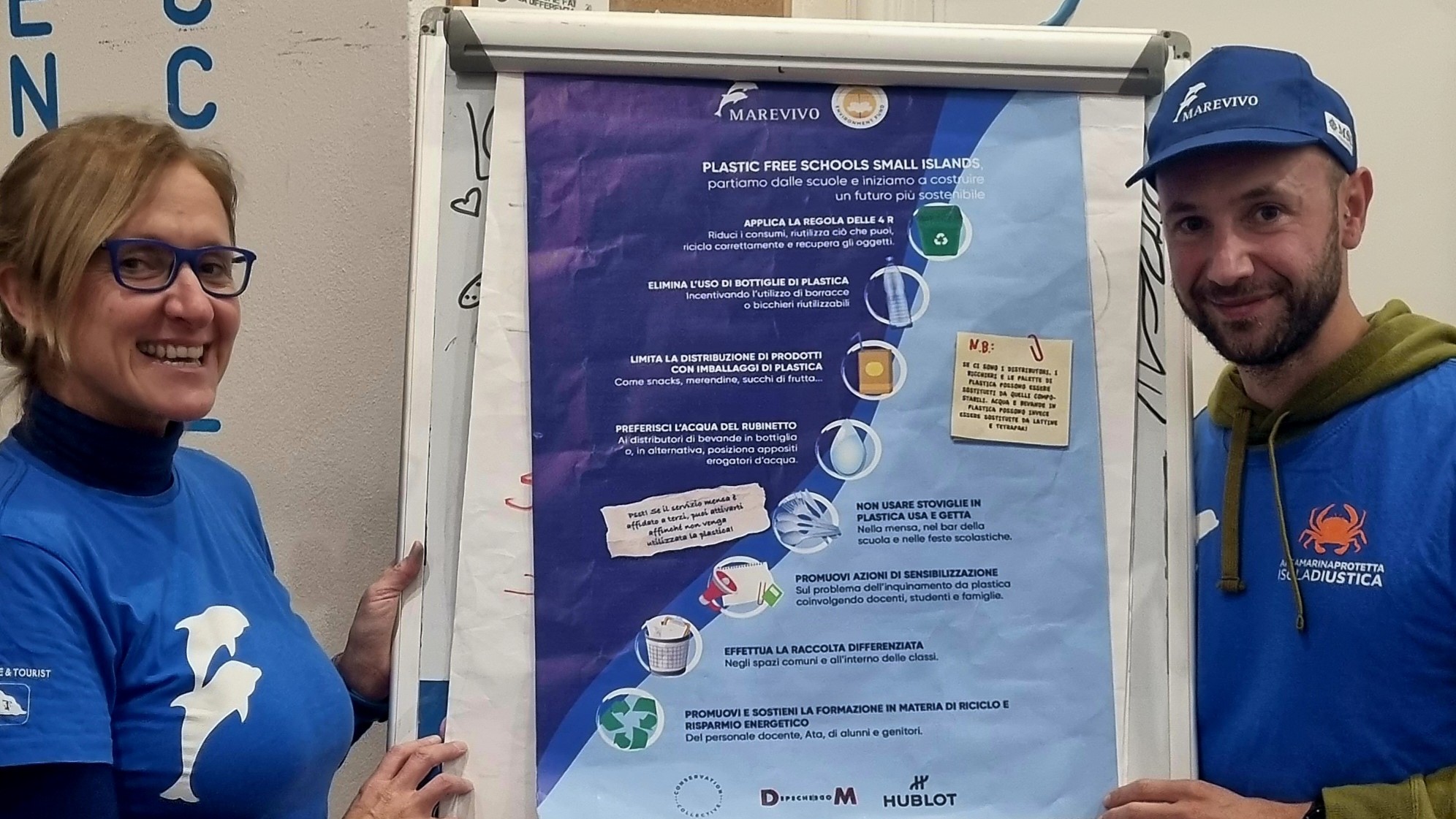
While I'm writing this article we’re still waiting for the response by the commission, whether our school in Ustica is going to win the water machine or not. Nevertheless, me and Tony believe we are already winners when we get the kids involved in environmental activities and have the chance to spread awareness on this topic.
Mhm…ok, yes - we’re also hoping to win!! Keep following us to get the news and see our videos when published by the school!
A glance at the past year
I’m glad we have been busy in all seasons of the year. We got in touch with children and adults, locals and foreigners, sharing awareness and best practices for sustainable behaviour, whether living on the island or coming just as visitors. There is no selected target when it’s about the environment, everyone has to do his part, but each category of people needs custom methods and understands different languages. Furthermore, it’s not only about the audience: those who are dedicated to environmental education have different interests and work in various fields . As a professional diver and dive entrepreneur, my area of expertise can only be the marine environment, and more than that, focussed on Ustica Island: despite boasting to be the first marine protected area in Italy, the island needs much more conservation endeavours and scientific research plans. Because of its richness in marine biodiversity and uniqueness for its geographical position and geological origins, we work on improving sustainable tourism by increasing citizen science activities and offering conservation programs included in our holiday packages. However, visitors come for a short stay while locals, unless they decide to leave the island and live somewhere else, will have to take care of their territory, and especially of its surrounding sea, since it’s a little island. And that’s why we embarked on the mission to work with children and young people of the island, with the purpose to create a new generation of island guardians.
A new year is to come, full of new programs and challenges, and I’m looking forward to giving my share!
What about you?
Whether you're already professional diver or willing to become so, looking for a position in a PADI 5*Resort with a environment-friendly approach and active in marine conservation projects, contact us now
Or if you're a recreational scuba or a freediver interested in spending a more valuable dive holiday, have a look at our Marine Life Experiences and Citizen Science projects.
Acknowledgements for all 2023 achievements go to:
- The CEO at Marevivo Sicilia for establishing a local group on Ustica Island and entrusting me as the local leader;
- The Director of the Marine Protected Area of Ustica Island for the inexhaustible availability in making things run smoothly and for bringing our projects to the attention of local administrators;
- The local Team Members and partners of the different projects, without whom we could not have carried out the activities;
- Last but not least, rather the first, my partners in life and in business, who support and encourage my projects and missions, and with whom I share any success (and alas, failures, too!)



